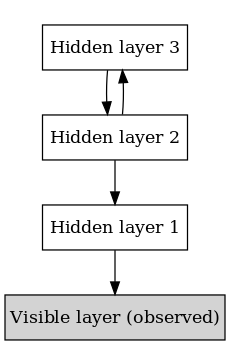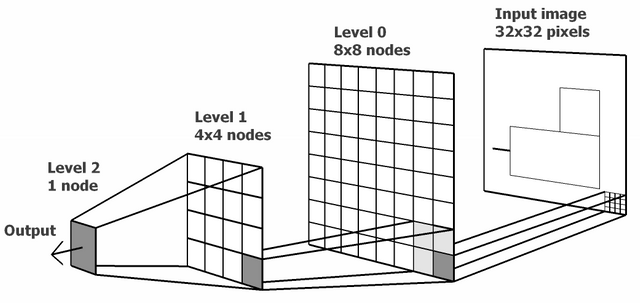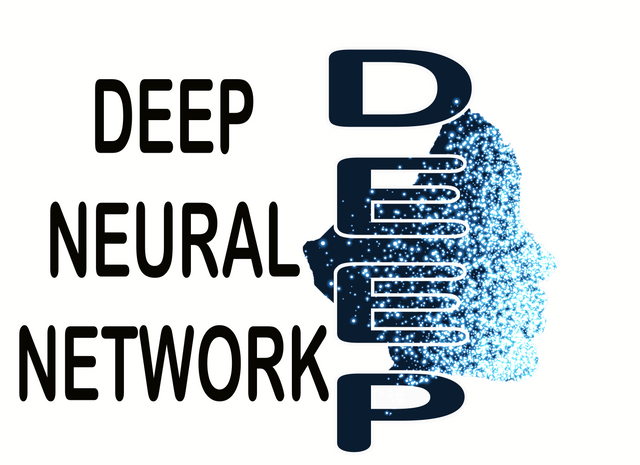Is Artificial Intelligence our future? Ch 6. Deep Neural Networks
[Image Source: Created by Starline - Freepik.com]
Hey Starlord here,
First of all, sorry for late post actually I'm working on a great stuff which I will bring to you all very soon.
A deep neural network is a neural network with more than one hidden layer. Adding more hidden layers allows the network to model progressively more complex functions. The ability to model more complex functions is what gives deep neural networks their power.
For example, if we wanted to teach a deep neural network how to detect human faces; first, in the input layer, we would feed a set of labelled images of human faces into the network in order to teach it what different faces look like.

[Image Source: By Qwertyus [CC0], Wikimedia commons]
The first hidden layer of the neural network would learn to detect geometric primitives. For example, horizontal lines, vertical lines, diagonal lines, etc. the middle-hidden layers would learn to detect more complex facial features; for example, eyes, a nose, or a mouth.

[Image Source: chrisvoncsefalvay.com ]
The final hidden layer would learn to detect the general pattern for entire faces, and the output layer would learn to detect the most abstract representation of a person; for example, the name of the person being recognized.
Each subsequent layer learns to extract more complex features from the preceding layer. As a result, each additional layer detects more abstract representations than the previous layer. This is what we refer to as learning hierarchical representation of underlying data.
There’s a hierarchy of component starting from the low-level details to the high-level abstractions. A deep neural network learns to model this composition hierarchy in order to make predictions. However, please keeps in mind that this visual model is a vast oversimplification of a real world deep neural network for image processing.
In a real image detection network, we would typically have significantly more neurons, much deeper layering, and a different network architecture. However, we’ll address these differences in the next module on deep leaning techniques.
So now, let’s return to our original definition to see if we have a better understanding of what deep learning is. Deep learning is a form of artificial intelligence that uses a type of machine learning called an artificial neural network with multiple hidden layer in attempt to learn hierarchical representations of the underlying data in order to make prediction for given new data.

[Image Source: Saulius Garalevicius wikimedia. CC BY-SA 3.0 licensed]
Now, hopefully this definition makes quite a bit more sense to you now that we’ve broken it down and explained each of these individual components. Finally, before we move on, I think it’s important to point out that most academics generally skip the biological introduction to neural networks and start with the completely mathematical definition.
While a purely mathematical interpretation is completely reasonable for an audience with a background in math and statistics, I find that the biological interpretation is more approachable for teaching deep neural network to a general audience.
I point this out because as you look to other source of information, you may see some instructors dismiss biological parallels as unnecessary or inaccurate. However, I want you to understand that there’s still value in using the biological metaphor for teaching deep neural networks even if it is a vast oversimplification of the way real biological brain actually work.
In last couple of chapters, we talk about artificial intelligence, which attempts to create machines that act rationally in response to their environment. Next, we talk about machine learning: software that learn by detecting statistical pattern in data.
Than, we talk about artificial neurons: the building block of artificial neural networks. Then, we talk about artificial neural networks: a type of machine learning based on a very crude approximation of neurons in a brain.
Finally, we talk about deep learning networks: stacked layer of neural networks that can learn hierarchical representation of data. In the next chapter, we’ll talk about Generative Adversarial Networks.
References for further reading

Congratulations! This post has been upvoted from the communal account, @minnowsupport, by starlord6414 from the Minnow Support Project. It's a witness project run by aggroed, ausbitbank, teamsteem, someguy123, neoxian, followbtcnews, and netuoso. The goal is to help Steemit grow by supporting Minnows. Please find us at the Peace, Abundance, and Liberty Network (PALnet) Discord Channel. It's a completely public and open space to all members of the Steemit community who voluntarily choose to be there.
If you would like to delegate to the Minnow Support Project you can do so by clicking on the following links: 50SP, 100SP, 250SP, 500SP, 1000SP, 5000SP.
Be sure to leave at least 50SP undelegated on your account.
Congratulations @starlord6414! You have completed the following achievement on Steemit and have been rewarded with new badge(s) :
Click on the badge to view your Board of Honor.
If you no longer want to receive notifications, reply to this comment with the word
STOPYou just planted 0.01 tree(s)!
Thanks to @starlord6414
We have planted already 3290.82 trees
out of 1,000,000
Let's save and restore Abongphen Highland Forest
in Cameroonian village Kedjom-Keku!
Plant trees with @treeplanter and get paid for it!
My Steem Power = 19571.48
Thanks a lot!
@martin.mikes coordinator of @kedjom-keku
Resteemed by @resteembot! Good Luck!
Check @resteembot's introduction post or the other great posts I already resteemed.